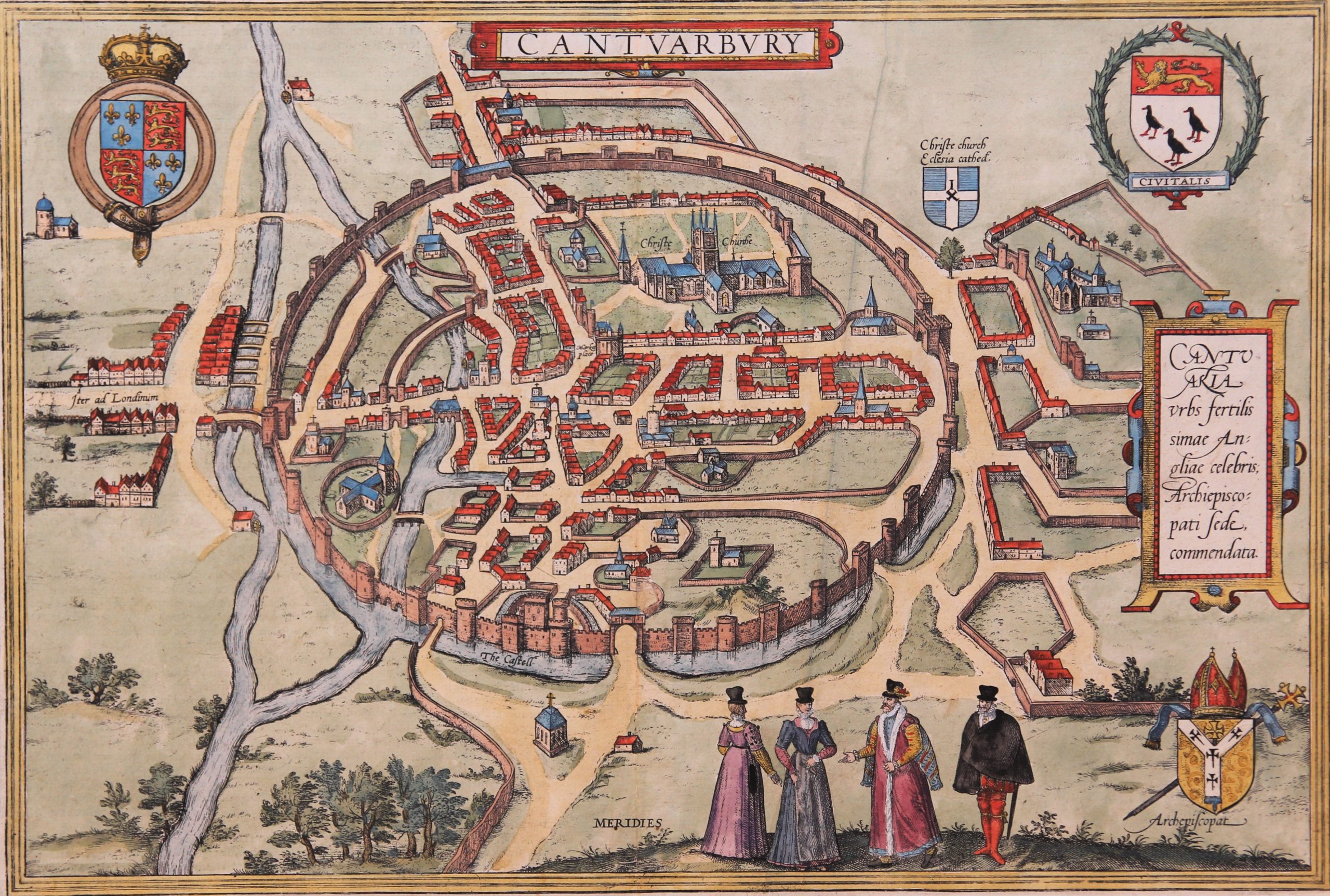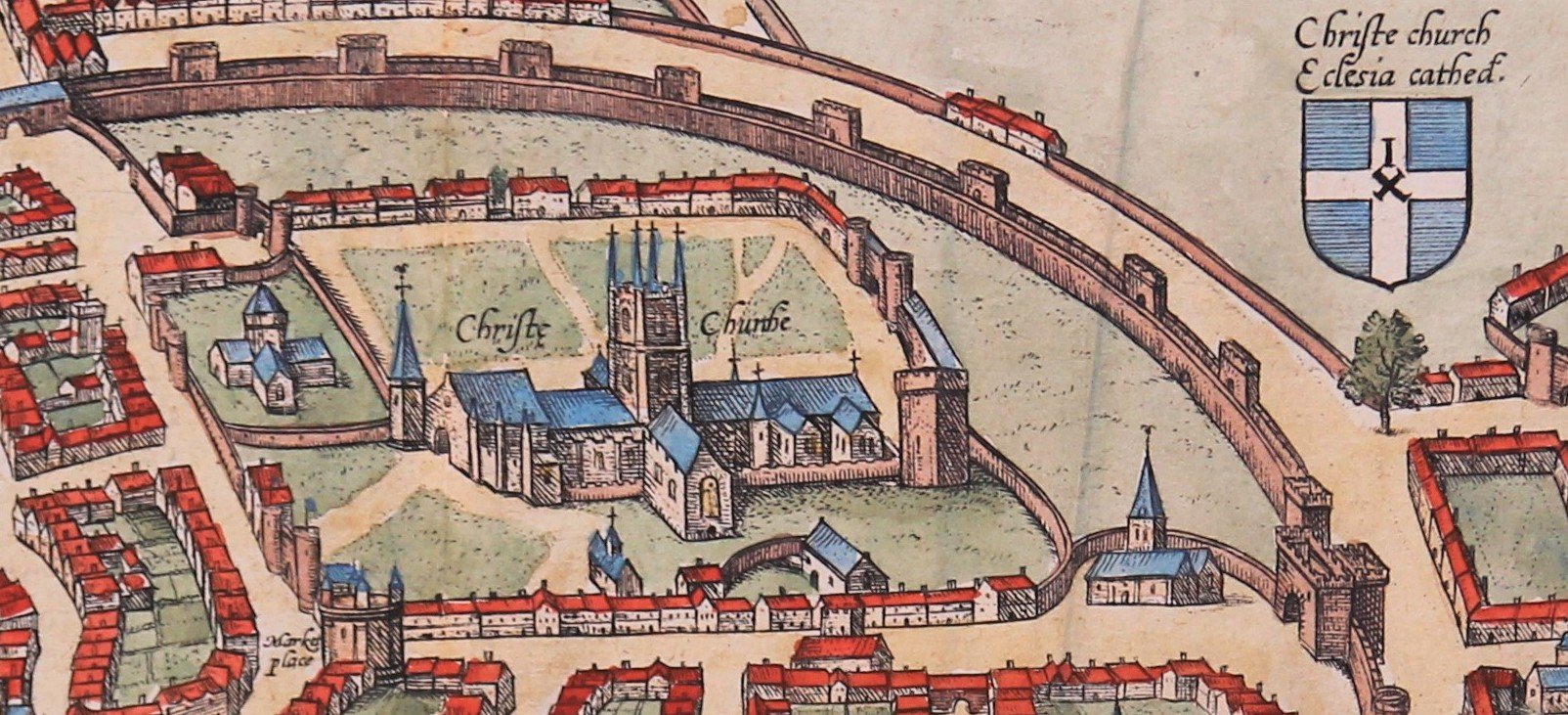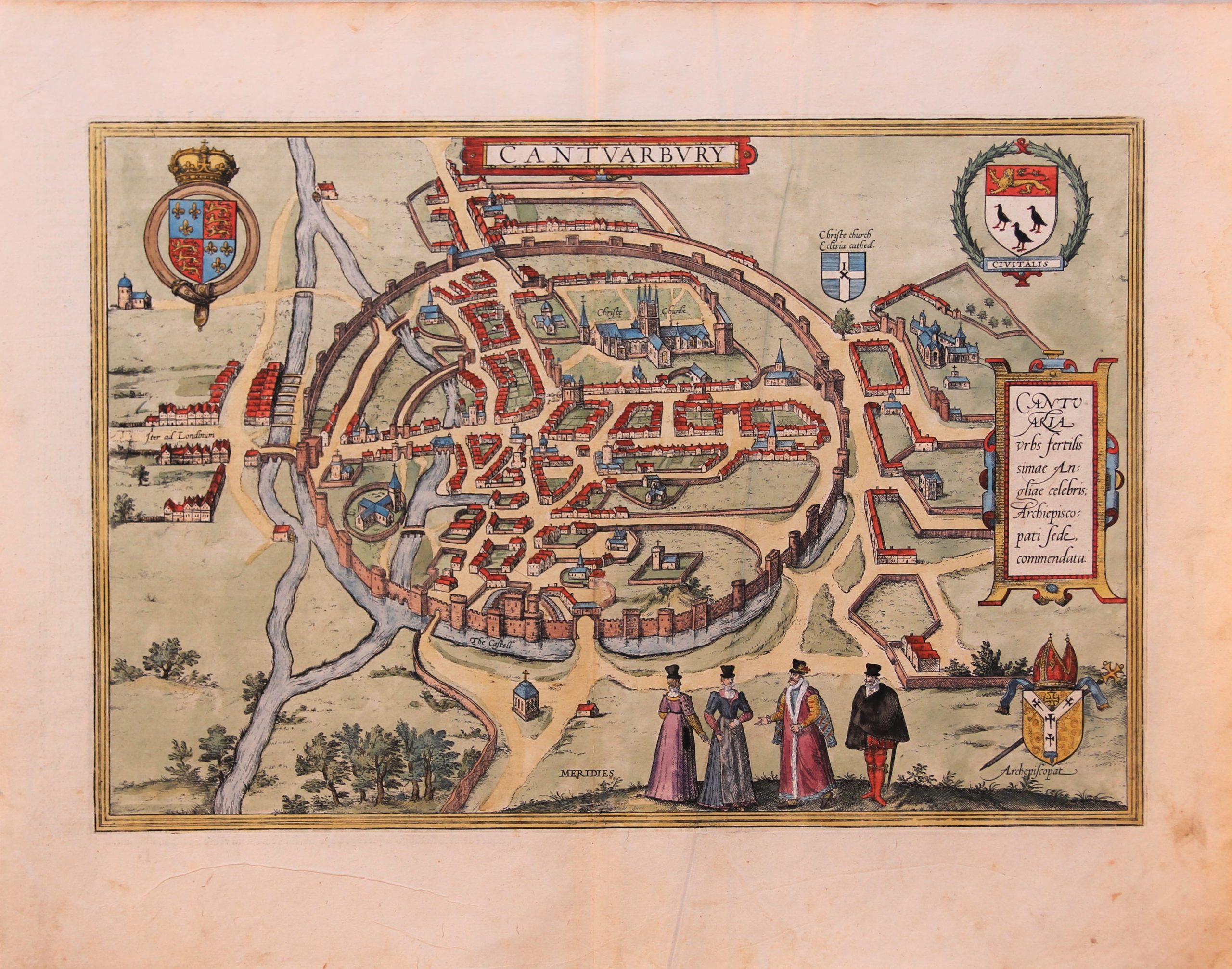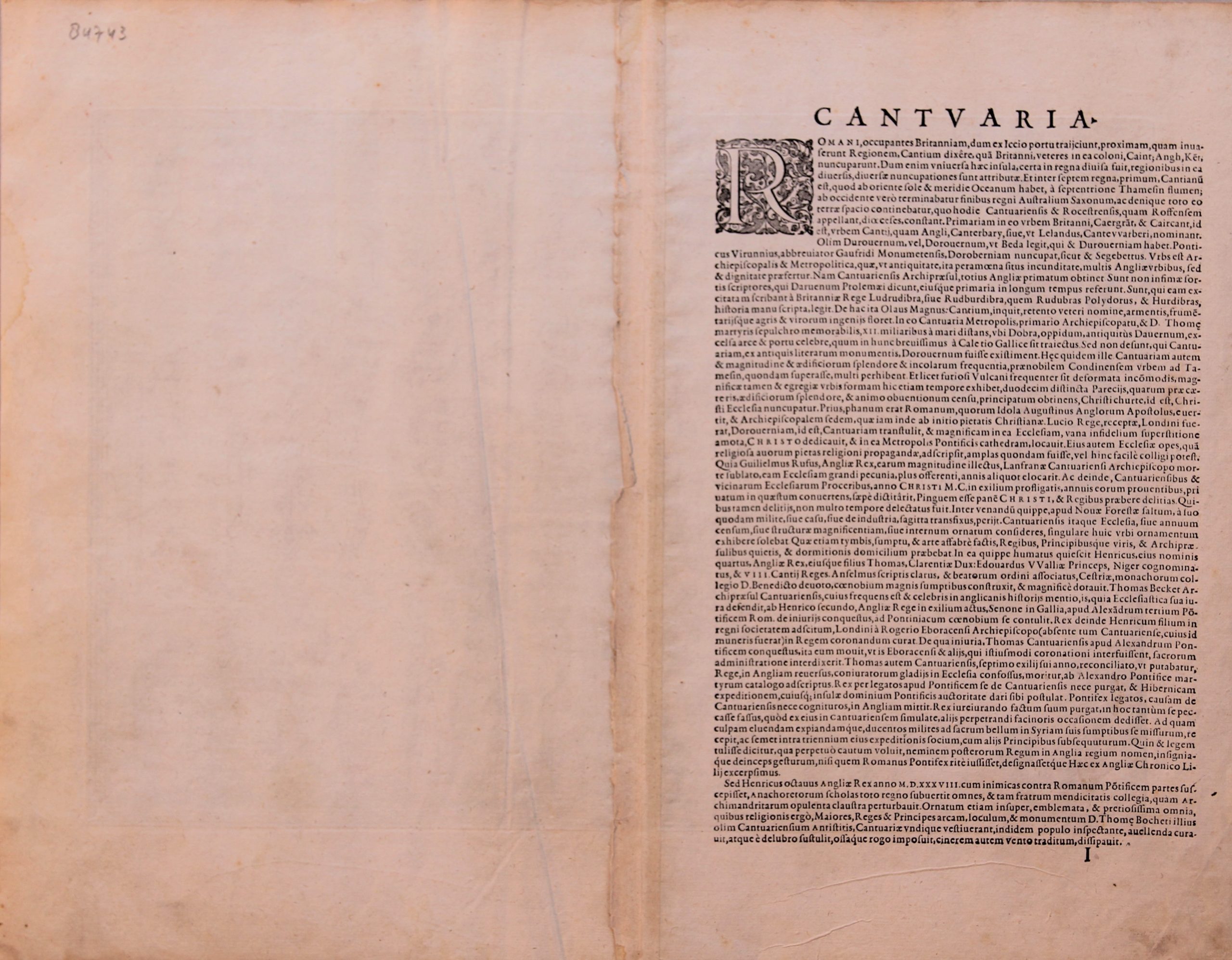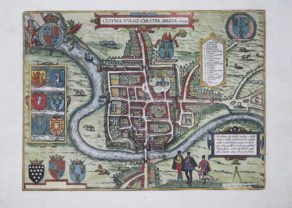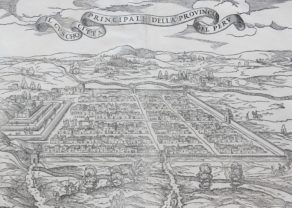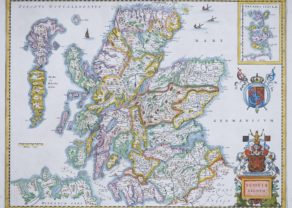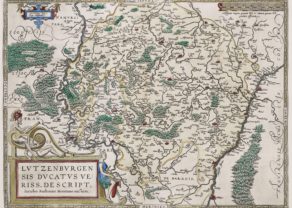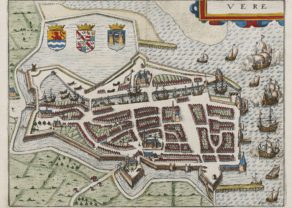Canterbury
Detail
Date of first edition: 1588
Date of this edition: 1588
Dimensions (not including margins): 29.3 x 43.1 cm
Dimensions (including margins): 40,1 x 50,6 cm
Condition: Very good. Copper engraving printed on hard laid paper with watermark. Centre fold as published, extra later fold right from centre. Slightly toned at edges.
Condition rating: A+
Verso: text in Latin; description of “Cantuaria”
References: Van der Krogt IV, 2-1, 779; Taschen, Br. Hog, p.270.
From: Civitates Orbis Terrarum, … Part 2: De Praecipuis, Totius Universi Urbibus, Liber Secundus. Van der Krogt IV-2,1,41:1-3, page 1
In stock
Canterbury commented by Braun
“This is the seat of an archbishopric and an administrative capital and is superior to many English cities in age, in life and even in worthiness. For the Archbishop of Canterbury is the most distinguished in the whole of England. […] The territory of Cantium has kept its old name and has many herds of cattle, cornfields and learned men. Its capital is Canterbury, famous because of its distinguished archbishopric and the tomb of St Thomas the Martyr; it lies twelve miles away from the sea near the little town of Dover, formerly called Dubris. […] But many say that Canterbury once far surpassed the great, splendid city of London, not only in respect of the size and magnificence of its buildings but also the number of its inhabitants.”
Translation of cartouche text: Canterbury, famous city in the very fertile county of England; notable as an archepiscopal see. (original text: Cantuaria urbs fertilis simae Angliae celebris, Archiepiscopati Sede commendata)
Taschen on Canterbury
This bird’s-eye view from the south shows Canterbury enclosed within a circular defensive wall. It was originally a Roman city with the name Durovernum Cantiacorum. In AD 597 Augustine, “Apostle to the English”, converted a church dating from Roman times into a cathedral and built a monastery there. From the 11th to the 15th century the old cathedral was replaced by the building that can be seen today. Archbishop Thomas à Becket was murdered in this church in 1170 because he opposed the reintroduction of royal privileges within the ecclesiastical sphere. Becket was canonized by Pope Alexander III in 1173. His tomb developed into an important place of pilgrimage until Henry VIII ordered the destruction of the shrine and the relics in 1538. On the left, the Westgate Tower can be seen next to the bridge over the Stour. The special status enjoyed by the city is underlined by the episcopal coat of arms in the lower right-hand corner. The Archbishop of Canterbury has been head of the Anglican Church since its separation from Rome in the 16th century.
